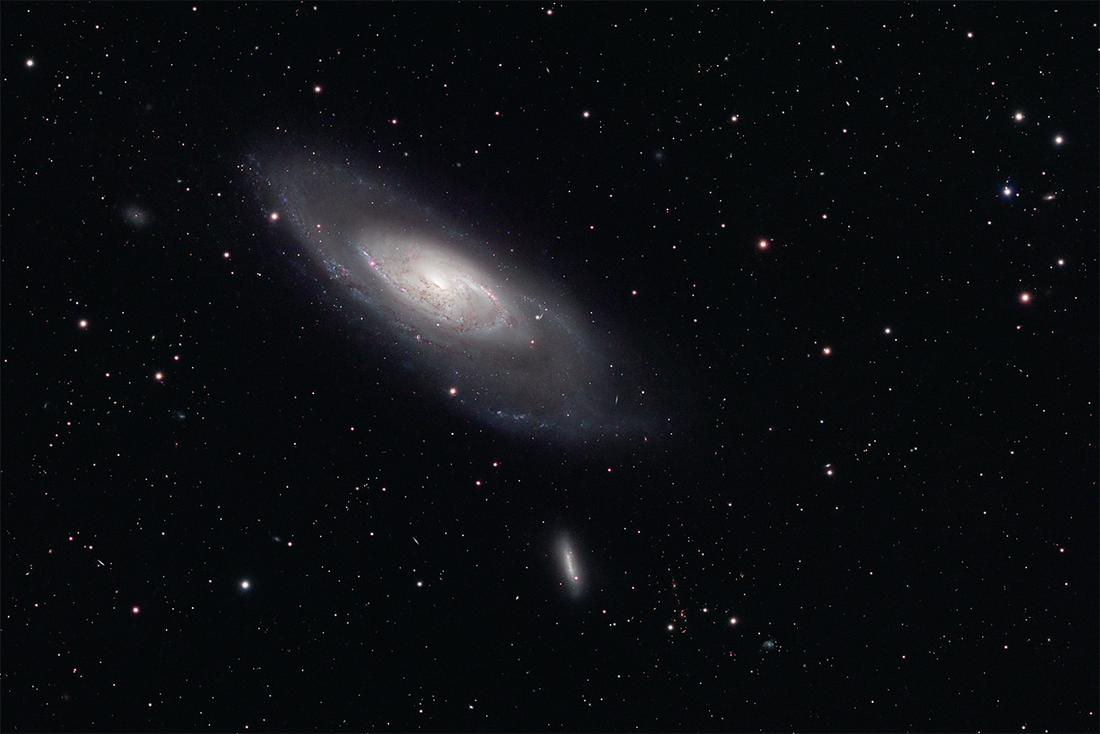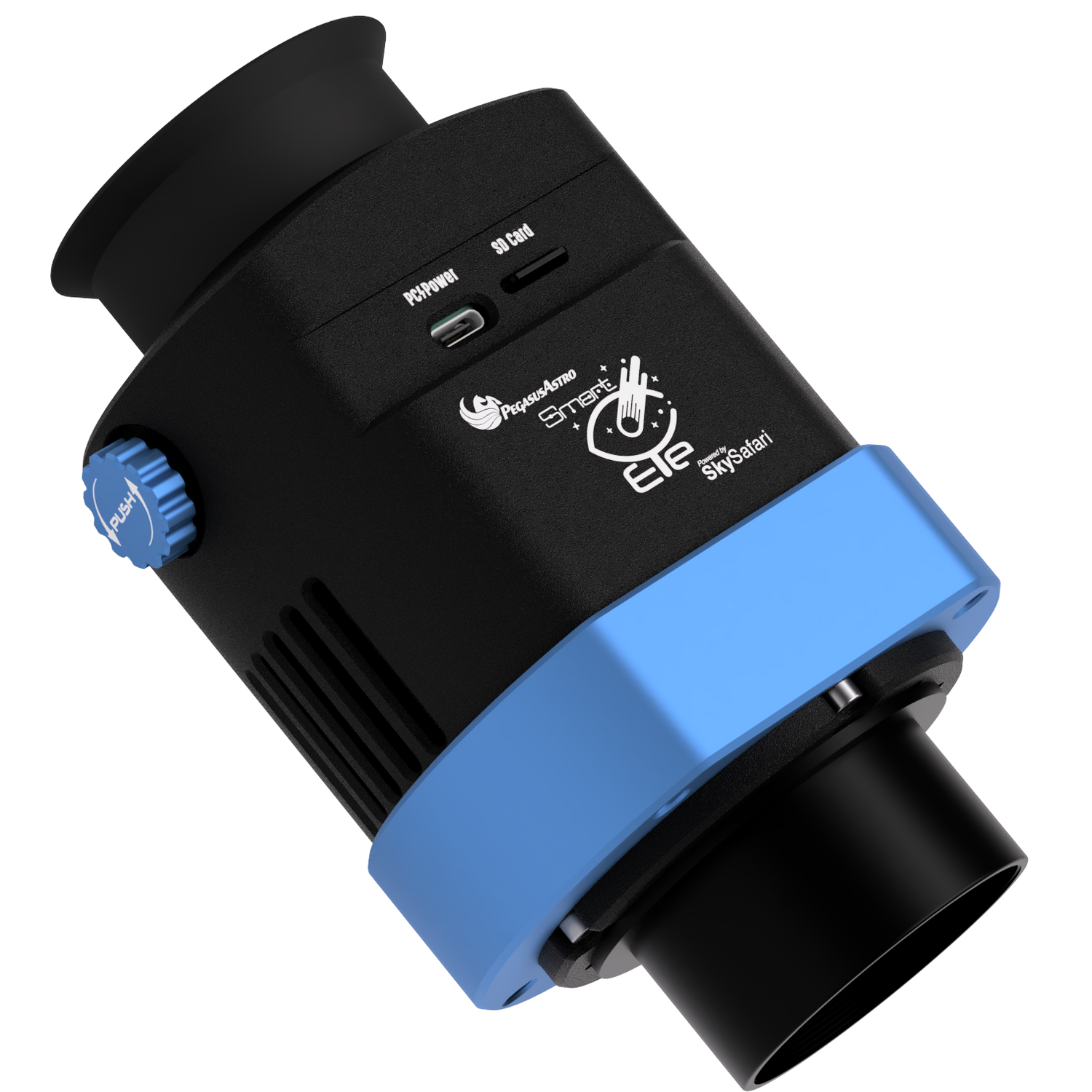
Messier 106: A Springtime Spiral Worth a Closer Look
Share
It’s spring, and spring is galaxy season for Northern Hemisphere observers and imagers. A rather large and often overlooked galaxy in the northern constellation of Canes Venatici is a beautiful barred spiral galaxy designated as Messier 106, or NGC 4258. M106 was a late comer to the Messier catalog, having been observed and recorded by Pierre Méchain in July of 1781. Messiers 104-107 were all championed in 1947 by Helen Sawyer Hog to be included in the famous Messier catalog when she found references to these targets in a letter by Méchain who worked with Messier. It took years for wider acceptance of these later targets to be included in the famous catalog, and even the late great Robert Burnham Jr. refused to reference this galaxy by anything other than its NGC (New General Catalog) designation. Occasionally you’ll still see it referenced in professional literature as “NGC 4258 (M106)”


It’s still a fairly good-sized target, and it is surrounded by many other interesting small galaxies that can be captured simultaneously if you have a wide field scope and/or a full frame image sensor. In the framing of the lead image, you can see NGC 4248 which is usually captured in the same field of view, hanging below the main target at a magnitude of 12.5. One of my favorite hidden gems here is hiding well below NGC 4258 -- an interacting pair of galaxies NGC 4232 (left in inset) and 4231 (to the right), these are around magnitude 10-11 and show up quite easily with an astronomical camera. This pair of galaxies are much further away at nearly 250 million light years. When the light from these galaxies left, grass had not yet evolved on Earth and there was just one supercontinent on Earth, Pangaea.
The main show and the plethora of surrounding galaxies in this field are all available with even short exposures of only a minute or two at focal ratios of f/7 or faster. The arms of M106 come out very quickly and show a great deal of detail.

M106 has a central black hole with a mass of 36 million Suns and the core of the galaxy has an almost 3D look to it, like a giant whirlpool pulling in the surrounding dust and gas. The spiral arms sport a good bit of structure, and a hydrogen alpha filter will help bring out some of the many star forming regions they sport. This central area is my favorite aspect of this galaxy, and it shows a lot of detailed dust lanes and segments. Don’t go overboard with the Ha, the star forming regions are a nice subtle feature that should not be overplayed.
M106 has a central black hole with a mass of 36 million Suns and the core of the galaxy has an almost 3D look to it, like a giant whirlpool pulling in the surrounding dust and gas. The spiral arms sport a good bit of structure, and a hydrogen alpha filter will help bring out some of the many star forming regions they sport. This central area is my favorite aspect of this galaxy, and it shows a lot of detailed dust lanes and segments. Don’t go overboard with the Ha, the star forming regions are a nice subtle feature that should not be overplayed. They should come out quite well with a color camera too. For the images here I used a monochrome camera, and about an hour each of Red, Green, and Blue exposures. Individual exposures were only two minutes as this is not a faint target. To just frost the star forming regions, I took only 21 minutes’ worth of three-minute exposures with a hydrogen alpha filter, just enough to make those magenta areas pop out a little better.
M106 is a worthy addition to the Messier catalog, and its high overhead at dark this time of year. Your next clear night, you should give it a go.
- Name: M106, NGC 4258, PGC 39600
- Constellation: Canes Venatici
- Classification: Intermediate Spiral Galaxy
- Distance: 23.5 million light years
- Apparent Size: 18.6 x 7.2 arcminutes
- Magnitude: 8.4

